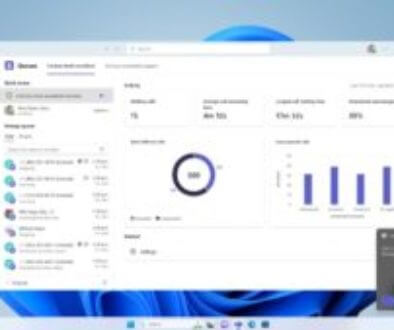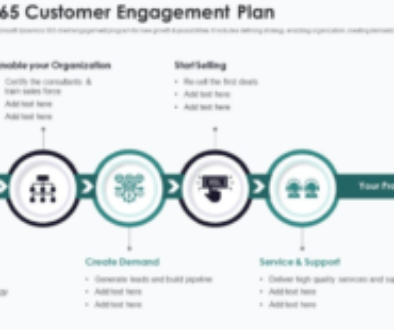
We know Office, because of the reputation of the office suite. With Microsoft 365, services have been added, such as OneDrive, Skype For Business or Exchange Online and Sharepoint. You may not know it yet, but other elements have been added to the services offered by Microsoft. We will give you a quick overview.
Note that we will not discuss the EM+S tools included in Microsoft365 in this article.
Office... What else?

Apart from the regular enhancements and improvements that Microsoft makes to its office suite, there have recently been new products and services that have completed the possibilities of collaborative work in cloud. To name a few, we have Bookings, Delve, TeamsSway, Planner, Forms, Stream and Flow.
Some of these services have been developed to meet the needs of SMEs, others enrich the collaboration of multimedia platforms in companies.

Microsoft Bookings
I'll start with Microsoft Bookings. This is a system that essentially publishes services and allows customers to book with the company to take advantage of them. This is done by synchronising the calendar and the available slots. Each booking is automatically added to your calendar, along with the client's contact information and the service required. Here is a short video demonstration:
As you can see, this can be very useful, especially for smaller structures, and this kind of service can be easily integrated into existing websites.

Microsoft Delve
Let's move on to Microsoft Delve. The aim is to enable all users of an organisation working under Office 365 to manage associations between documents, information links and the use of common resources, in an interface that makes it easy to find one's way around. Short video explanation:
Delve displays personalised content from Office 365 (OneDrive Enterprise, SharePoint, Exchange, Yammer, etc.). Delivered with Office Graph, Delve displays information based on the content you are working on and the people you are collaborating with, while respecting your permissions.

Microsoft Teams
As one of the most important aspects for Microsoft is, the collaborative work, a new tool, grouping the main functions has been made available, I speak about Teams.
Microsoft Teams allows you to chat in real time, have video conversations or simply write a message. It allows you to track company updates (similar to Yammer groups) and access all attached files in a central location. Of course, you can access it from your mobile device or computer. Teamwork is what this platform is all about. The platform brings together all Office 365 applications - including Word, Excel, PowerPoint, OneNote, SharePoint and Power BI. Because employees are familiar with these tools, it is easy for them to use the platform. With easy-to-share features, your team members are more in sync than ever. In order to widely communicate the possibilities, a YouTube channel has been set up.

Microsoft Sway
We will now talk about Sway. When it was launched, many people presented Sway as a replacement for PowerPoint. Although it is geared towards presenting a topic, Sway is distinguished by its online use of content management and editing. It is a tool that allows you to create original presentations without having to worry about formatting. You can simply integrate content from various sources, such as videos, images and even a map. Short video presentation:
In short, it's a virtual storytelling application for work, school and home that allows you to easily create and share elaborate interactive reports, presentations, personal stories and more. Just add your content and Sway does the rest.

Microsoft Planner
Microsoft Planner was recently introduced to complement what can be done with Microsoft Project. Planner should be seen as a complement to managing distributed tasks between different teams in the same organisation. By launching Planner, you can then create a plan, set up a team, assign tasks and update progress in a few simple steps. A Dashboard allows you to track the progress of tasks by person and by team.
Very useful in a multi-departmental structure, with various projects or teams.
One point that is often missing is the creation of forms to compile information or surveys. There is InfoPath that allows you to do this, but Microsoft wanted to go further, with a possibility of realization on the cloud website, which can be integrated in any type of website. From this idea comes Microsoft Forms.
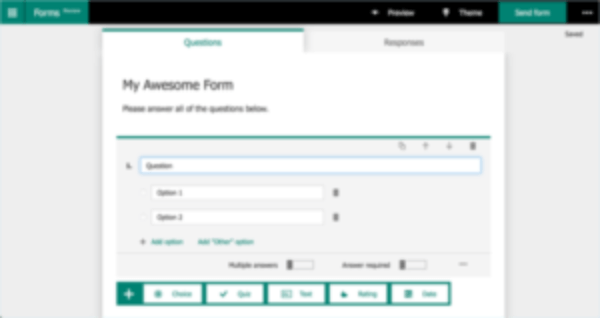
Microsoft Forms
Still in Preview version (discovery, but not in final version), this product allows to easily build an online form and post it. For example, a course evaluation could be created and participants could give their satisfaction. The information can then be transferred to Office 365.
Small demo:
One of the advantages is that it is possible to share access to your form outside the structure of your organisation or company (e.g. satisfaction survey for customers).
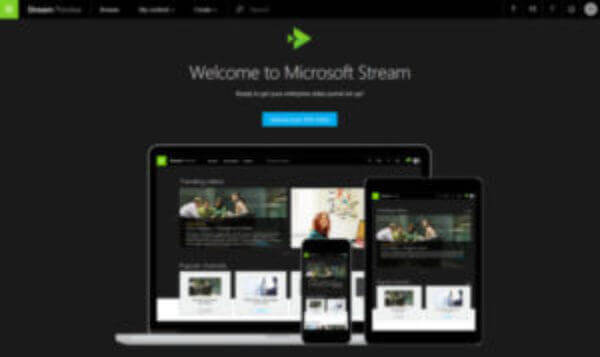
Microsoft Stream
Let's talk about video content. Some time ago, Microsoft proposed a product that it just called "Video", based on an environment Sharepoint. A new product called Stream was recently released. Eventually, Stream will replace the video app withinOffice 365. Video to explain what Stream does:
Stream could be compared to a kind of corporate YouTube, with broadcast channels, themes and much easier video playback.
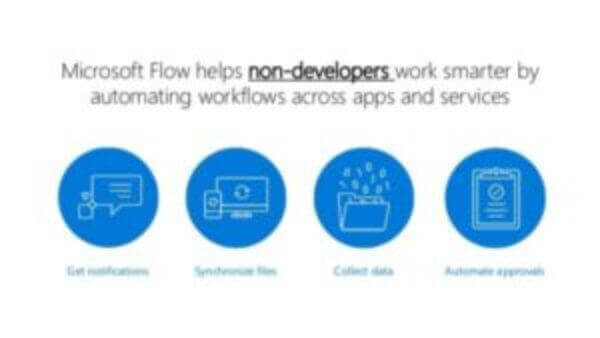
Microsoft Flow (or Power Platform)
Finally, we will talk about Microsoft Flow. This is a flow and process manager that can be linked to various applications or data entries as triggers for actions that you want to automate. This can range from detecting a tweet about the company, to alerting multiple groups to a communication, or creating an entry Sharepoint and sending a link automatically to a group of users. The big plus point of the product is that it is aimed at non-developers, to perform automatic tasks very simply, in your organisation Office 365.
Here is an explanatory video:
In short Microsoft 365 ; A bomb?
Unquestionably, Microsoft has boosted its offer for enterprises, with a number of innovative products. The announcements around future solutions, based on Cloud and Office 365 modules will continue to increase in the coming months and years. It is clear that Microsoft is looking to compete with Google and its products cloud. We can also see that solutions such as Slack, which has a strong presence in collaboration, has put some pressure on Microsoft to occupy a place in a rapidly expanding services market. One of the major difficulties will remain the communication of the availability of these services, their interaction / integration in companies and a view on the sustainability of the products in the future.
Author: Michel Aguilera
We share your challenges, we accompany your changes
If you have a question or a suggestion, we are at your disposal to answer it by email or by phone.

